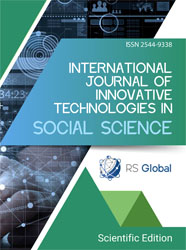STRIAE DISTENSAE: A LITERATURE REVIEW OF TREATMENT MODALITIES AND THEIR CLINICAL EFFICACY
Abstract
Background. Striae distensae, or stretch marks, are common linear dermal scars resulting from collagen and elastin disruption. They frequently affect women during puberty and pregnancy, as well as individuals experiencing rapid weight gain or endocrine disorders, and can substantially impair quality of life.
Aim. This review aimed to synthesize current literature on the pathophysiology, risk factors, and therapeutic options for striae distensae, with a focus on aesthetic medicine techniques such as laser therapies and microneedling.
Materials and Methods. Between March and June 2025, PubMed, PMC, and Google Scholar were systematically searched using the keywords “aesthetic medicine,” “striae,” “stretch marks,” “laser therapy,” and “microneedling.” Studies reporting clinical efficacy, histological changes, and safety profiles were included.
Results. Topical agents (e.g., retinoids, Centella asiatica, and hyaluronic acid) produced modest improvements. Among aesthetic procedures, chemical peels, platelet rich plasma, microdermabrasion, carboxytherapy, and radiofrequency demonstrated variable success. Microneedling and fractional CO₂ laser treatments yielded the most pronounced results, especially in combination, achieving up to 60-70% improvement in early (striae rubrae) lesions. However, mature hypopigmented striae albae remained particularly resistant, with improvements typically below 30%. Adverse events-primarily transient erythema and post inflammatory hyperpigmentation-were more common in darker skin phototypes.
Conclusions. Complete elimination of stretch marks remains unachievable; nonetheless, combination based, individualized approaches can significantly enhance their appearance. There is a critical need for robust, large scale randomized trials employing standardized, objective assessments, long term follow up, and inclusion of diverse skin phototypes and patient reported outcomes to establish evidence based treatment protocols.
References
Adatto, M. (2023). Clinical evaluation of the efficacy of fractional radiofrequency for the treatment and reduction of stretch marks: A prospective study. Journal of Cosmetic Dermatology, 22(1), 214–221. https://doi.org/10.1111/jocd.15463
Adatto, M. A., & Deprez, P. (2003). Striae treated by a novel combination treatment – sand abrasion and a patent mixture containing 15% trichloracetic acid followed by 6–24 hrs of a patent cream under plastic occlusion. Journal of Cosmetic Dermatology, 2(2), 61–67. https://doi.org/10.1111/j.1473-2130.2004.00023.x
Ahmed, N. A., & Mostafa, O. M. (2019). Comparative study between: Carboxytherapy, platelet‐rich plasma, and tripolar radiofrequency, their efficacy and tolerability in striae distensae. Journal of Cosmetic Dermatology, 18(3), 788–797. https://doi.org/10.1111/jocd.12685
Aktoz, F., & Yilmaz, N. (2024). Comparing fractional microneedle radiofrequency and fractional CO2 laser for striae distensae treatment: a systematic review and meta-analysis. Lasers in Medical Science, 39(1), 271. https://doi.org/10.1007/s10103-024-04231-8
Alexiades-Armenakas, M. R., Bernstein, L. J., Friedman, P. M., & Geronemus, R. G. (2004). The Safety and Efficacy of the 308-nm Excimer Laser for Pigment Correction of Hypopigmented Scars and Striae Alba. Archives of Dermatology, 140(8). https://doi.org/10.1001/archderm.140.8.955
Alsharif, S. H., Alghamdi, A. S., Alhumaidi, W. A., AlRobaish, O. A., Al Hamoud, M. H., Alruwaili, A. S., AlQefari, G. B., & Almutairi, R. T. (2023). Treatment of Striae Distensae with Filler Injection: A Systematic Review. Clinical, Cosmetic and Investigational Dermatology, Volume 16, 837–845. https://doi.org/10.2147/CCID.S405715
Borrelli, M. R., Griffin, M., Ngaage, L. M., Longaker, M. T., & Lorenz, H. P. (2021). Striae Distensae: Scars without Wounds. Plastic & Reconstructive Surgery, 148(1), 77–87. https://doi.org/10.1097/PRS.0000000000008065
Deprez, P. (2000). Easy Peel for the Treatment of Stretch Marks. International Journal of Cosmetic Surgery and Aesthetic Dermatology, 2(3), 201–204. https://doi.org/10.1089/153082000750062894
Fatemi Naeini, F., Behfar, S., Abtahi-Naeini, B., Keyvan, S., & Pourazizi, M. (2016). Promising Option for Treatment of Striae Alba: Fractionated Microneedle Radiofrequency in Combination with Fractional Carbon Dioxide Laser. Dermatology Research and Practice, 2016, 1–7. https://doi.org/10.1155/2016/2896345
Gauglitz, G. G., Reinholz, M., Kaudewitz, P., Schauber, J., & Ruzicka, T. (2014). Treatment of striae distensae using an ablative Erbium: YAG fractional laser versus a 585-nm pulsed-dye laser. Journal of Cosmetic and Laser Therapy, 16(3), 117–119. https://doi.org/10.3109/14764172.2013.854621
GOLDMAN, A., ROSSATO, F., & PRATI, C. (2008). Stretch Marks: Treatment Using the 1,064-nm Nd:YAG Laser. Dermatologic Surgery, 34(5), 686–692. https://doi.org/10.1111/j.1524-4725.2008.34129.x
Gungor, S., Gokdemir, G., Sayilgan, T., & Ozcan, D. (2014). Evaluation of an ablative and non-ablative laser procedure in the treatment of striae distensae. Indian Journal of Dermatology, Venereology, and Leprology, 80(5), 409. https://doi.org/10.4103/0378-6323.140296
Hexsel, D., Soirefmann, M., Porto, M. D., Schilling-Souza, J., Siega, C., & Dal’Forno, T. (2014). Superficial Dermabrasion Versus Topical Tretinoin on Early Striae Distensae: A Randomized, Pilot Study. Dermatologic Surgery, 40(5), 537–544. https://doi.org/10.1111/dsu.12460
Huang, Q., Xu, L., Wu, T., & Mu, Y.-Z. (2022). New Progress in Therapeutic Modalities of Striae Distensae. Clinical, Cosmetic and Investigational Dermatology, Volume 15, 2101–2115. https://doi.org/10.2147/CCID.S379904
Ibrahim, Z. A. E., El‐Tatawy, R. A., El‐Samongy, M. A., & Ali, D. A. M. (2015). Comparison between the efficacy and safety of platelet‐rich plasma vs . microdermabrasion in the treatment of striae distensae: clinical and histopathological study. Journal of Cosmetic Dermatology, 14(4), 336–346. https://doi.org/10.1111/jocd.12160
Jaiswal, S., & Jawade, S. (2024). Microneedling in Dermatology: A Comprehensive Review of Applications, Techniques, and Outcomes. Cureus. https://doi.org/10.7759/cureus.70033
Kang, S. (1998). Topical tretinoin therapy for management of early striae. Journal of the American Academy of Dermatology, 39(2), S90–S92. https://doi.org/10.1016/S0190-9622(98)70453-0
Khater, M. H., Khattab, F. M., & Abdelhaleem, M. R. (2016). Treatment of striae distensae with needling therapy versus CO 2 fractional laser. Journal of Cosmetic and Laser Therapy, 18(2), 75–79. https://doi.org/10.3109/14764172.2015.1063665
Lause, M., Kamboj, A., & Fernandez Faith, E. (2017). Dermatologic manifestations of endocrine disorders. Translational Pediatrics, 6(4), 300–312. https://doi.org/10.21037/tp.2017.09.08
Lee, S. E., Kim, J. H., Lee, S. J., Lee, J. E., Kang, J. M., Kim, Y. K., Bang, D., & Cho, S. Bin. (2010). Treatment of Striae Distensae Using an Ablative 10,600-nm Carbon Dioxide Fractional Laser. Dermatologic Surgery, 36(11), 1683–1690. https://doi.org/10.1111/j.1524-4725.2010.01719.x
Listiawan, M. Y., Prakoeswa, C. R. S., Astari, L., Zulkarnain, I., Sawitri, Rahmadewi, Wardhani, P. H., & Harnanti, D. V. (2021). A comparison study of the 0.1% tretinoin cream versus fractional microneedle radiofrequency combination with fractional CO 2 laser for the treatment of striae alba in Indonesian patients. Journal of Cosmetic and Laser Therapy, 23(3–4), 81–86. https://doi.org/10.1080/14764172.2021.1975757
Lokhande, A., & Mysore, V. (2019). Striae distensae treatment review and update. Indian Dermatology Online Journal, 10(4), 380. https://doi.org/10.4103/idoj.IDOJ_336_18
Longo, L., Postiglione, M. G., Marangoni, O., & Melato, M. (2003). Two-Year Follow-Up Results of Copper Bromide Laser Treatment of Striae. Journal of Clinical Laser Medicine & Surgery, 21(3), 157–160. https://doi.org/10.1089/104454703321895617
Lu, H., Guo, J., Hong, X., Chen, A., Zhang, X., & Shen, S. (2020). Comparative effectiveness of different therapies for treating striae distensae. Medicine, 99(39), e22256. https://doi.org/10.1097/MD.0000000000022256
Mazzarello, V., Farace, F., Ena, P., Fenu, G., Mulas, P., Piu, L., & Rubino, C. (2012). A Superficial Texture Analysis of 70% Glycolic Acid Topical Therapy and Striae Distensae. Plastic and Reconstructive Surgery, 129(3), 589e–590e. https://doi.org/10.1097/PRS.0b013e3182419c40
McDANIEL, D. H., ASH, K., & ZUKOWSKI, M. (1996). Treatment of Stretch Marks with the 585-nm Flashlamp-pumped Pulsed Dye Laser. Dermatologic Surgery, 22(4), 332–337. https://doi.org/10.1111/j.1524-4725.1996.tb00326.x
Mendes, N., Alves, P. J., Barros, M., Rodrigues, J. M., & Machado, J. (2022). A Narrative Review of Current Striae Treatments. Healthcare (Basel, Switzerland), 10(12). https://doi.org/10.3390/healthcare10122565
Mohamad, N. E., ELgameel, R. M., & Mohamed, M. H. (2022). Comparative study between the effectiveness of plasma skin regeneration versus micro‐needling in the treatment of striae distensae. Journal of Cosmetic Dermatology, 21(10), 4545–4553. https://doi.org/10.1111/jocd.14751
Mustafa, A., Zahid, R., Khan, S., Faisal, M., Hassan Farooq, M. A., Imran, J., Malik, W., Khan, A., Azeem, B., Maryam, A., Kumar, S., & Khatri, M. (2025). Evaluating CO2 laser and micro-needling therapies for striae distensae: a comprehensive meta-analysis and systematic review. Lasers in Medical Science, 40(1), 161. https://doi.org/10.1007/s10103-025-04420-z
Nada, H. A., Sallam, M. A., Mohamed, M. N., & Elsaie, M. L. (2021). Optical Coherence Tomography‐Assisted Evaluation of Fractional Er:YAG Laser Versus Fractional Microneedling Radiofrequency in Treating Striae Alba. Lasers in Surgery and Medicine, 53(6), 798–805. https://doi.org/10.1002/lsm.23349
Naeini, F., Nikyar, Z., Mokhtari, F., & Bahrami, A. (2014). Comparison of the fractional CO2 laser and the combined use of a pulsed dye laser with fractional CO2 laser in striae alba treatment. Advanced Biomedical Research, 3(1), 184. https://doi.org/10.4103/2277-9175.140090
Nouri, K., Romagosa, R., Chartier, T., Bowes, L., & Spencer, J. M. (1999). Comparison of the 585 nm Pulse Dye Laser and the Short Pulsed CO2 Laser in the Treatment of Striae Distensae in Skin Types IV and VI. Dermatologic Surgery, 25(5), 368–370. https://doi.org/10.1046/j.1524-4725.1999.07320.x
Park, K. Y., Kim, H. K., Kim, S. E., Kim, B. J., & Kim, M. N. (2012). Treatment of Striae Distensae Using Needling Therapy: A Pilot Study. Dermatologic Surgery, 38(11), 1823–1828. https://doi.org/10.1111/j.1524-4725.2012.02552.x
Pribanich, S., Simpson, F. G., Held, B., Yarbrough, C. L., & White, S. N. (1994). Low-dose tretinoin does not improve striae distensae: a double-blind, placebo-controlled study. Cutis, 54(2), 121–124.
Ross, N. A., Ho, D., Fisher, J., Mamalis, A., Heilman, E., Saedi, N., & Jagdeo, J. (2017). Striae Distensae: Preventative and Therapeutic Modalities to Improve Aesthetic Appearance. Dermatologic Surgery, 43(5), 635–648. https://doi.org/10.1097/DSS.0000000000001079
Sadick, N. S., Magro, C., & Hoenig, A. (2007). Prospective clinical and histological study to evaluate the efficacy and safety of a targeted high‐intensity narrow band UVB/UVA1 therapy for striae alba. Journal of Cosmetic and Laser Therapy, 9(2), 79–83. https://doi.org/10.1080/14764170701313767
Sany, I., Mohamed Sobhi, R., Badawi, A., Mohamed Elmaadawi, Z., & Mostafa, P. I. N. (2022). Comparative Study Between the Efficacy of Fractional CO2 Laser/Radiofrequency, PRP and a Combination of Both in the Treatment of Striae Distensae: A Pilot Study. Clinical, Cosmetic and Investigational Dermatology, Volume 15, 1687–1694. https://doi.org/10.2147/CCID.S365952
Seong, G. H., Jin, E. M., Ryu, T. U., Kim, M. H., Park, B. C., & Hong, S. P. (2021). Fractional Radiofrequency Microneedling Combined With Fractional Carbon Dioxide Laser Treatment for Striae Distensae. Lasers in Surgery and Medicine, 53(2), 219–226. https://doi.org/10.1002/lsm.23264
Shu, X., Huo, W., Zou, L., Li, Z., Tang, Y., Li, L., & Wang, X. (2023). Treatment of Stretch Marks Using a New Formulation Combining Nanofractional Radiofrequency Plus Magnetic Nanofractional Radiofrequency. Dermatology and Therapy, 13(6), 1277–1288. https://doi.org/10.1007/s13555-023-00926-y
SUH, D.-H., CHANG, K.-Y., SON, H.-C., RYU, J.-H., LEE, S.-J., & SONG, K.-Y. (2007). Radiofrequency and 585-nm Pulsed Dye Laser Treatment of Striae Distensae: A Report of 37 Asian Patients. Dermatologic Surgery, 33(1), 29–34. https://doi.org/10.1111/j.1524-4725.2007.33004.x
Tay, Y.-K., Kwok, C., & Tan, E. (2006). Non-ablative 1,450-nm diode laser treatment of striae distensae. Lasers in Surgery and Medicine, 38(3), 196–199. https://doi.org/10.1002/lsm.20281
Trelles, M. A., Levy, J. L., & Ghersetich, I. (2008). Effects Achieved on Stretch Marks by a Nonfractional Broadband Infrared Light System Treatment. Aesthetic Plastic Surgery, 32(3), 523–530. https://doi.org/10.1007/s00266-008-9115-0
Ud-Din, S., McAnelly, S.-L., Bowring, A., Whiteside, S., Morris, J., Chaudhry, I., & Bayat, A. (2013). A double-blind controlled clinical trial assessing the effect of topical gels on striae distensae (stretch marks): a non-invasive imaging, morphological and immunohistochemical study. Archives of Dermatological Research, 305(7), 603–617. https://doi.org/10.1007/s00403-013-1336-7
Ud‐Din, S., McGeorge, D., & Bayat, A. (2016). Topical management of striae distensae (stretch marks): prevention and therapy of striae rubrae and albae. Journal of the European Academy of Dermatology and Venereology, 30(2), 211–222. https://doi.org/10.1111/jdv.13223
Wang, K., Ross, N., Osley, K., Sahu, J., & Saedi, N. (2016). Evaluation of a 1540-nm and a 1410-nm Nonablative Fractionated Laser for the Treatment of Striae. Dermatologic Surgery, 42(2), 225–231. https://doi.org/10.1097/DSS.0000000000000629
Yang, Y. J., & Lee, G.-Y. (2011). Treatment of Striae Distensae with Nonablative Fractional Laser versus Ablative CO 2 Fractional Laser: A Randomized Controlled Trial. Annals of Dermatology, 23(4), 481. https://doi.org/10.5021/ad.2011.23.4.481
Views:
187
Downloads:
82
Copyright (c) 2025 Sylwia Boczek, Mikołaj Herba, Kacper Ordon, Patrycja Misiaszek

This work is licensed under a Creative Commons Attribution 4.0 International License.
All articles are published in open-access and licensed under a Creative Commons Attribution 4.0 International License (CC BY 4.0). Hence, authors retain copyright to the content of the articles.
CC BY 4.0 License allows content to be copied, adapted, displayed, distributed, re-published or otherwise re-used for any purpose including for adaptation and commercial use provided the content is attributed.















